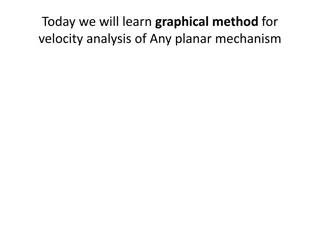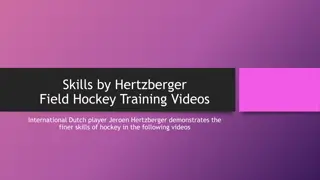Introduction to Kinematics and Dynamics of Machines in Industrial Engineering Department
This chapter introduces the mechanisms and machines in industrial engineering focusing on the kinematics and dynamics of machines. The concept of slider-crank mechanisms and their inversions are explored, providing applications such as reciprocating engines, rotary engines, and hand pumps. Additiona
2 views • 19 slides
Windows market
Windows Market by Material (Wood, Wood-Clad, Metal, Plastic, Fiberglass), Frame Type (Slider, Casement, Awning, Hopper, Fixed, Single-Hung, Double-Hung, Glass Block), and Geography - Global Forecasts to 2029\n
1 views • 4 slides
Understanding Slider Crank Mechanism: Practice Problems and Solutions
Explore a practice problem based on a slider crank mechanism, involving calculations for velocity of the slider, velocity of a point on the connecting rod, and angular velocity. Detailed steps and solutions provided to understand the concepts clearly.
1 views • 6 slides
Kinematics of Machines: Instantaneous Center Method for Velocity and Acceleration Analysis
Explore the method of locating instantaneous centers in mechanisms to analyze velocity and acceleration. The content covers examples of pin-jointed four-bar mechanisms and slider-crank mechanisms, providing dimensions and angular velocities calculations. Prof. Divyesh B. Patel from L.E. College, Mor
0 views • 13 slides
Windows revenue Worth $52 Billion by 2029
Windows by Material (Wood, Wood-Clad, Metal, Plastic, Fiberglass), Frame Type (Slider, Casement, Awning, Hopper, Fixed, Single-Hung, Double-Hung, Glass Block), and Geography - Global Forecasts to 2029\\n
2 views • 4 slides
Acceleration Analysis of Slider Crank Mechanism
In this analysis, we calculate the acceleration of the slider at point B, acceleration of point E, and the angular acceleration of the link AB in a slider crank mechanism. The steps involve drawing configuration, velocity, and acceleration diagrams with suitable scales to determine the necessary par
0 views • 12 slides
Graphical Method for Velocity Analysis of Planar Mechanisms
Learn about the graphical method for velocity analysis of planar mechanisms through practice problems involving slider-crank mechanisms and link velocities. Understand how to calculate slider velocity, point velocity, and angular velocities using the given dimensions and rotational speeds. Visualize
0 views • 6 slides
Creating Eye-Catching Poster Designs with Customizable Colors and Formats
Learn how to design visually appealing posters with customizable colors and formats. This guide provides insights into adjusting colors, optimizing layouts for print, and utilizing the zoom slider for detailed examination. Explore examples showcasing effective poster appearance formatting techniques
0 views • 7 slides
Understanding The Scotch Yoke Mechanism: Experiment and Analysis
The Scotch Yoke Mechanism is a slider-crank mechanism that converts linear motion into rotational motion or vice versa. This experiment involves studying the velocity, acceleration, and displacement of a slider as the crank is rotated with constant angular velocity in a slotted link slider-crank mec
0 views • 5 slides
Mastering Field Hockey Skills with Jeroen Hertzberger Training Videos
International Dutch player Jeroen Hertzberger showcases expert field hockey techniques in a series of training videos. Learn essential skills like open receiving, elimination moves, the chop, forehand shot, right foot scoring, reverse pass, high reverse backhand, slider pass, drag flick, penalty str
0 views • 15 slides
Creating a Crankshaft in SolidWorks: Step-by-Step Guide
Learn how to design and assemble a crankshaft in SolidWorks using the sweep feature, sketches for profile and path, and adding components like a conrod and slider. Follow along with detailed visual aids and audio annotations.
0 views • 6 slides
Analysis of Slider-Crank Mechanism and Experimental Data
Slider-crank mechanism analysis involves understanding the transformation of input motion into desired output motion. This mechanism consists of a crank, coupler, slider, and ground link, converting circular motion into linear motion. Experimental procedures involve setting crank angles and recordin
0 views • 6 slides











